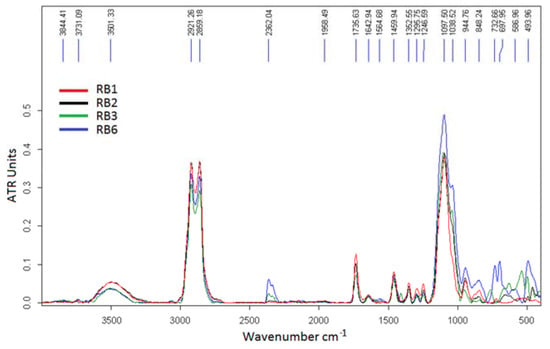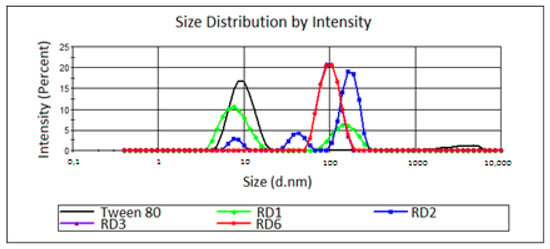Mesoporous silica nanoparticles (MSN) are currently central to studies in different scientific areas. One of the most promising domains for MSN applications is nanomedicine. They have gained significant advantages over other types of nanoparticles used as transport vectors for drugs, such as adaptable structure depending on synthesis conditions, biocompatibility, high specific surface area, and a large pore volume. In this study, we used three different surfactants and various silica co-precursors in order to create silica nanoparticles able to encapsulate curcumin to use them as potential transport vectors.
During synthesis, three different surfactants, Tween 80 (RB and RD series), Triton X (RA series), and Sodium bis(2-ethylhexyl)sulfosuccinate (RC series), were evaluated as templates for the preparation of mesoporous silica particles. In order to have fine control over the MSNs’ size, we also used different silica co-precursors: octadecyl-triethoxisilane (ODTES), octyl-triethoysilane (OTES), phenyl-triethoysilane (PhTES), tetraethyl-ortosilicate (TEOS), and vinyl-triethoxysilane (VTES). After synthesis, excess surfactant was removed through a dialysis purification process, using a membrane with an MWCO of 6–8 kDa.
FT-IR, DLS, and SEM analyses were performed on the obtained transport vectors in order to study their structure, size, and morphological aspects. From the FT-IR spectra of RB series (Figure 1), it was observed that the predominant peaks were generated by the surfactants. Dynamic light scattering (DLS) measurements (Figure 2) revealed that the control samples (marked with “1”) showed bimodal distributions, which correspond to the main population of silica particles, but also to a secondary population of small micelles, formed by the excess of surfactant. With the addition of different co-precursors to the sol-gel system (such as TEOS for the samples marked with “2”), the average size of the silica particles increased, while the peak corresponding to the empty surfactant micelles diminished. It was also observed that by addition of VTES or PhTES in the composition, the resulting particles have comparable sizes in both samples. However, their average size varies with the type of surfactant.

Figure 1.
FT−IR spectra of RB series.

Figure 2.
DLS results of RD series.
Following these results, we selected for further investigation the compositions of RB (with ODTES) and RD series (with OTES), both produced in the presence of Tween 80, as the most stable, with uniform and reproducible dimensions. In addition, we took into account that Tween 80 is a surfactant more suitable for biomedical applications. Thus, these sets of samples have the highest potential to be tested as curcumin transport vectors for biomedical applications.
Author Contributions
Conceptualization: C.I.M. and C.L.N.; Validation: C.P. and L.O.C.; Investigation: S.G.B., B.T., C.S., R.I., C.N., C.G. and E.A.; Writing—original draft preparation: C.I.M.; Writing—review and editing: C.I.M. and C.L.N. All authors have read and agreed to the published version of the manuscript.
Funding
This research was funded by Ministry of Research, Innovation and Digitization, CNCS/CCCDI—UEFISCDI, project number PN-III-P2-2.1-PED-2019-4657, contract 318 PED/2020, within PNCDI III.
Institutional Review Board Statement
Not applicable.
Informed Consent Statement
Not applicable.
Data Availability Statement
Not applicable.
Conflicts of Interest
The authors declare no conflict of interest.
Publisher’s Note: MDPI stays neutral with regard to jurisdictional claims in published maps and institutional affiliations. |
© 2022 by the authors. Licensee MDPI, Basel, Switzerland. This article is an open access article distributed under the terms and conditions of the Creative Commons Attribution (CC BY) license (https://creativecommons.org/licenses/by/4.0/).